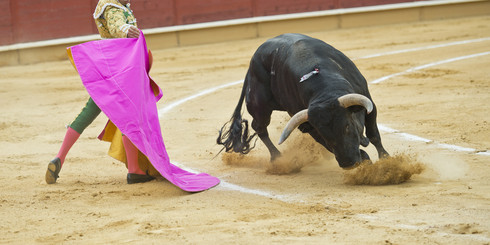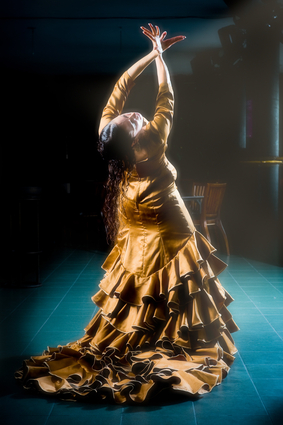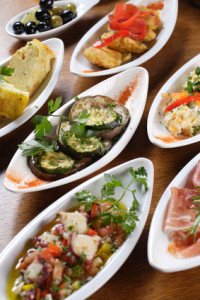Brief History of Spain
 Spain is a country that attracts tourists from all over the world and most likely this is due to its rich culture, history, and also its delicious cuisines throughout the 50 Provinces. It is a European country that shares a border with France to the north, the Balearic and Mediterranean Seas to the east, the tip of Morocco to the south (about 30 miles by ferry), and Portugal to the west. The capital is Madrid and the government is considered to be based on Parliamentary Monarchy principles.
Spain is a country that attracts tourists from all over the world and most likely this is due to its rich culture, history, and also its delicious cuisines throughout the 50 Provinces. It is a European country that shares a border with France to the north, the Balearic and Mediterranean Seas to the east, the tip of Morocco to the south (about 30 miles by ferry), and Portugal to the west. The capital is Madrid and the government is considered to be based on Parliamentary Monarchy principles.
It is a society rich with traditions that stem from its ancient history of many civilizations such as the Celtic, Iberian cultures, Phoenicians, Moors and the Ancient Romans. At the onset, Spain had its roots closely tied to the Ancient Romans; however, throughout time it began to incorporate its own Spanish traditions and elements to make it one of the most interesting and vibrant cultures of the world today.
In the Middle Ages, it was heavily influenced by a Muslim culture; however, during the Christian Reconquista Period (1000 AD through 1492) a big change occurred and the country became almost entirely Roman Catholic. Today, Spain’s population is predominantly Catholic; however, about 16% do practice other faiths. As Spain colonized the Americas, this also took on a different flavor as other traditions and customs became intertwined; thus, making this a very diverse culture.
With this diversity came foods, traditions, and other languages. Spanish, sometimes known as Castilian or Castellano Spanish, is the main language spoken throughout the country, but there are other major languages such as Catalan (also known as Valencian), Basque, Galician and Aranese. There are others, but these are some of the most common.
Free Expressions, Bullfighting, and Flamenco Dancing in Spain
 Believe it or not, it is actually legal to walk around nude throughout the many beaches in Spain; however, for the most part the nudist colonies do remain secluded. On occasion, you may glimpse a person wearing absolutely nothing at a “normal” beach, but it’s usually the exception. Some of the more visited nude beaches are the Costa Natura Nudist Resort in the Andalusian village area, the Barinatxe Nudist Beach in what is considered Basque country, or even the El Templo del Sol Nudist campsite about an hour’s drive from Barcelona.
Believe it or not, it is actually legal to walk around nude throughout the many beaches in Spain; however, for the most part the nudist colonies do remain secluded. On occasion, you may glimpse a person wearing absolutely nothing at a “normal” beach, but it’s usually the exception. Some of the more visited nude beaches are the Costa Natura Nudist Resort in the Andalusian village area, the Barinatxe Nudist Beach in what is considered Basque country, or even the El Templo del Sol Nudist campsite about an hour’s drive from Barcelona.
In addition to nude beaches, Spain is also known for its bullfighting arenas; although, for every person wanting to keep this tradition going, there is a dozen more protesting that it be banned due to its inhumane and cruel treatment of the animals. Although there is much discussion and opposition to this “sport,” the practice still continues today and many citizens consider it a national pastime.
Flamenco dancing has become synonymous with Spain; although, it is mostly a predominant dance coming from the Province of Andalusia. This dance is known for its enticing and charismatic interpretations, which is comprised of skilled dancers, singers, and musicians that come together to bring heartrending performances to many audiences. For many centuries it was considered the music of the poor and oppressed peoples, but today it has quickly become known around the world as a form of art and expression. It is thought that this art form started back in the 16th century and many cultures such as the Gypsies, Moors, Arabs, and indigenous Andalusians all had a hand in creating this captivating dance.
Cuisine of Spain
As you travel throughout Spain, you will note that each of the 50 Provinces have cuisines specific to their region; however, a food that is common to most areas is fish. This is most notably due to Spain being bordered by large bodies of water. As Spain becomes more globalized, so do its foods. It is no different than other modern countries of today.
There are, however, some foods that are unique to Spain and remain very much a part of their staple. One of the most common dishes is paella which has several variations such as white rice and seafood, others come with white rice and vegetables, and yet others are made with white rice and an assortment of meats including snails. There are many types of stews, cheeses, migas which is day old bread mixed and with olive oil and spinach and other variations. Also, very popular is the jamon Serrano, which is a dry cured type ham. Sausages, such as chorizo, can be spicy and are very common throughout as well as calamares; also known as fried squid. Gazpacho, from Andalusia, is a chilled tomato soup that is considered light and refreshing and quite common.
 Lamb is on most restaurant menus along with a variety of wines. An assortment of beans can be found in most provinces; however, lentils, chickpeas, and green beans are most common. Some of the favorite desserts are flan (pudding), custards, churros (long sugar coated donuts), torrijas (a French toast), and arroz con leche (rice pudding). One of the most popular things to order when in Spain is Tapas. These are appetizer type dishes and vary according to the area and restaurant. Many people go from bar to bar drinking and ordering Tapas without ever ordering a full meal.
Lamb is on most restaurant menus along with a variety of wines. An assortment of beans can be found in most provinces; however, lentils, chickpeas, and green beans are most common. Some of the favorite desserts are flan (pudding), custards, churros (long sugar coated donuts), torrijas (a French toast), and arroz con leche (rice pudding). One of the most popular things to order when in Spain is Tapas. These are appetizer type dishes and vary according to the area and restaurant. Many people go from bar to bar drinking and ordering Tapas without ever ordering a full meal.
Sports and Celebrations in Spain
Although many sports are played in Spain, soccer continues to be at the forefront for most of the population. In Spain it is called “futbol” but it is not like the American “football” that is played in the states; however, the camaraderie and national attention that this sport receives in Spain is much like the National Football League (NFL) football is given in the United States.
One of the most celebrated holidays in Spain is Semana Santa (Holy Week). This is a holiday taking place the week before Easter. This celebration encompasses parades and many religious events throughout the country. The streets are decorated and fireworks are common. Depending on the province, there are also other celebrations throughout the year honoring the various patron saints. Of course, bullfighting events are usually part of the festivities as well.
General bullfighting, however, is different than the festival of San Fermin. The San Fermin celebration takes place in July in the city of Pamplona. This is where the bulls are released into the streets and people gather to watch or to run in front of the bulls trying to avoid the horns and being trampled as the animals make their way along the narrow streets. It is held to honor Saint Fermin and was made famous to the rest of the world by Ernest Hemingway’s novel The Sun Also Rises.
Another popular festival that has taken the world by storm is the Festival of La Tomatina. This is held in the town of Buñol and is strictly a tomato fight for entertainment. This takes place in August on the last Wednesday of the month. It appears to have started back in the mid 1900s due to several disgruntled men throwing tomatoes at authorities, or at least the story goes.
Music of Spain
There are many cultures that have influenced the music heard in Spain today. These cultures can be traced back to the early historical periods of the Ancient Greeks and Romans, and other Latin American cultures that Spain ruled for many centuries. Spain’s music is a myriad of these different blends of instruments and sounds. Its musical influences come from the countries that border it or are nearby, as well as the uniqueness that each Spanish province brings. There is a strong French, Italian, and Portuguese influence as these are close neighbors to Spain. As you visit the various Spanish provinces, it shouldn’t be a surprise to hear music coming from instruments such as the guitar, flutes, bagpipes, castanets, tambourines, accordion, and countless others too numerous to mention.
Although today there are many variations of music heard throughout Spain, there was a time when pop music was not quite so common. This was mostly under the rule of Francisco Franco’s regime. Currently, though, a new generation of musicians is putting their own spin on sounds after being influenced by American, British, and other world groups. There are large music festivals throughout Spain such as the Benidorm International Song Festival and the San Remo Music Festival, and so many others throughout Barcelona and Majorca. These events continue to introduce and bring new tunes to the forefront.
Of course, Julio Iglesias and his son Enrique Iglesias are just two of the great performers that have stemmed from this culture. In addition, you have other famous artists such as Charo (known the world over), Alejandro Sanz (an award winning artist), David Bisbal, Miguel Bose, La Quinta Estacion and the list goes on.
Interesting and Fun Facts of Spain – Did you know that?
Picasso was born in Malaga, Spain, and Salvador Dali was born in Figueres, Spain.
The official name of Spain is really Reino de Espana, which means Kingdom of Spain?
The Spanish National holiday is October 12.
Spain’s currency is the Euro.
Tooth fairies do not exist in Spain, but rather they have Ratoncito Perez (the tooth mouse).
Catherine of Aragon, first wife of King Henry VIII, was Spanish.
In the 16th century, Spain was one of the largest and dominant empires throughout the world.
Spain is the third largest country in Europe with France and the Ukraine being first.




